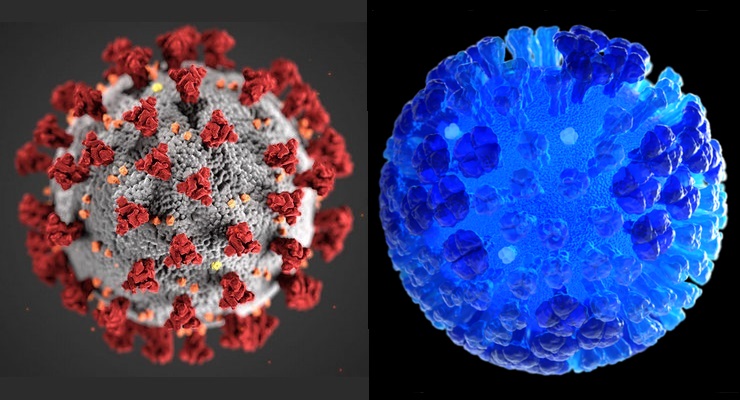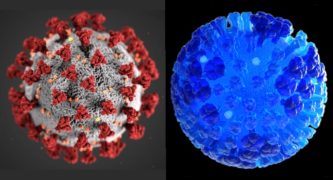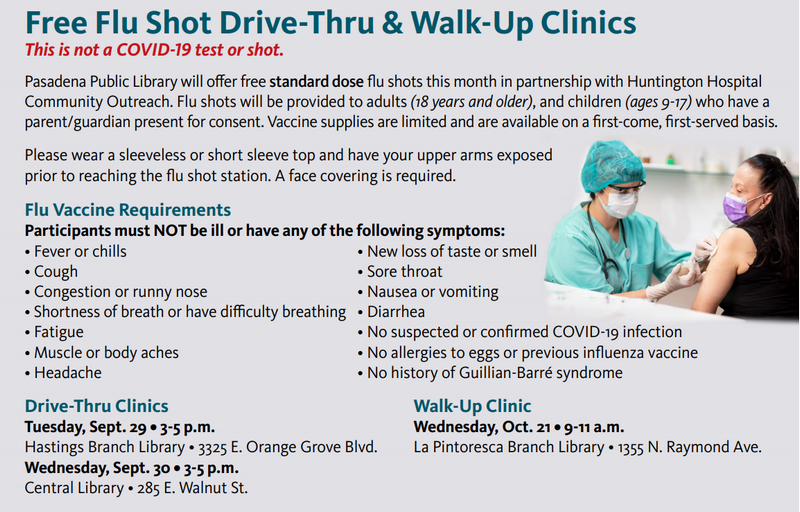
Flu season is about to descend on Southern California, and while Pasadena health officials say it’s known that people can be infected with both viruses at the same time, the consequences of co-infection remain to be fully understood.
Both illnesses have the potential to be fatal on their own, especially in vulnerable populations, Pasadena Public Health Department Epidemiologist Dr. Matt Feaster said.
“The seasonal flu is always a threat, killing an average of 12,000 to 61,000 Americans each year. In Pasadena, around 40 people die of influenza or pneumonia each year,” he said. “We still do not know how a deadly disease like COVID-19 could modify this number.”
The COVID-19 pandemic came to the U.S. just as last year’s flu season was winding down, leaving little data for doctors and researchers to work with, he explained.
“The pandemic was still in its infancy in the US during our flu season, but early reports from other countries did document co-infection of SARS-Cov2 and influenza,” according to Feaster. “We do not know how they affect each other, [except] to say that it has been documented that people can be infected by both at the same time.”
“The flu season is just about to start and so it is too early to tell how COVID-19 will affect flu-related deaths,” he said.
The potential for co-infection, along with the uncertainty regarding the effects of contracting both viruses, makes the seasonal flu shot especially important this year, according to Pasadena and Los Angeles County public health officials.
Coming down with one of the illnesses may make people more vulnerable to the other.
“People with compromised respiratory systems are at higher risk for being infected with the flu and/or COVID, so it is always a good idea to protect yourself,” Feaster said.
In addition to the availability of flu vaccines, the same social distancing and sanitation measures used to combat the novel coronavirus are also effective at limiting the spread of influenza, he said. “…so we hope that people take the appropriate precautions to slow the spread of both.”
Both Pasadena and county health officials said they will be monitoring each respiratory-related death to determine whether the flu or COVID-19 was the cause.
The presence of COVID-19 is unlikely to displace the traditional flue, experts said.
“Flu unfortunately does not play a game of Risk, battling for corporeal real estate in humans,” Feaster said. “Instead, the predominant strains depend on a complex mix of infectiousness, severity and global position.”
Several different strains of influence circulate every year, and scientists work to predict which ones will become the most predominant in order to target them with the seasonal vaccines.
Staff at Huntington Hospital also joined in urging the public to get vaccinated against the flu.
“Now more than ever, an annual influenza vaccination is recommended for all people six months and older who have no contraindications, which are people with severe allergies to the flu vaccine or any ingredient in the vaccine,” the hospital said in a written statement.
The symptoms presented by both the flu and COVID-19 can be very similar, according to Huntington.
Both can cause fever, chills, body aches, cough, chest discomfort, fatigue, headache, sore throat and congestion, hospital representatives said. Symptoms generally considered unique to COVID-19 include loss of smell, while nausea, vomiting, diarrhea and shortness of breath are more common with COVID-18 than the flu.
The sooner people get vaccinated, the better, according to Huntington Hospital. The flu season generally peaks between December and February.
L.A. County Department of Public Health officials said in a written statement that the agency “strongly encourages residents to get immunized for flu to stay healthy during the pandemic.”
“Given both are circulating this season, there is a risk of co-infection,” according to the county statement. “As with every flu season, a flu immunization can help lessen the risk of severe complications [or] illness from flu, especially among people with chronic conditions and pregnant women.”
“The flu immunization will not protect against COVID, but it will keep you healthy and your immune system strong in case you do contract COVID,” according to the statement. “It will also help you avoid going to the hospital and help lessen the burden on hospitals that might have an influx of both flu and COVID patients.”














 0 comments
0 comments



